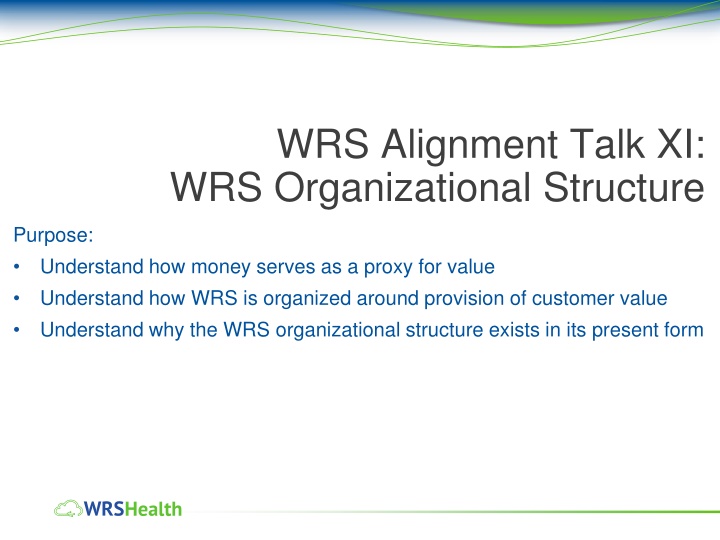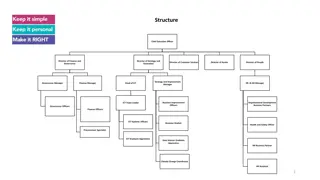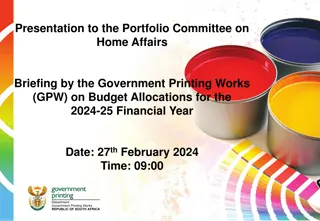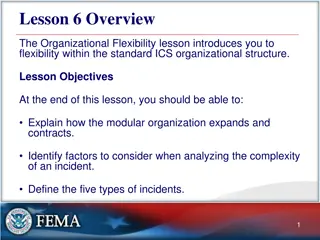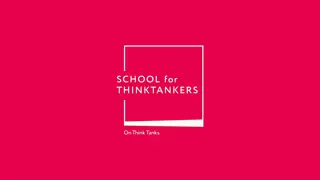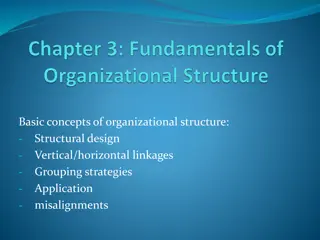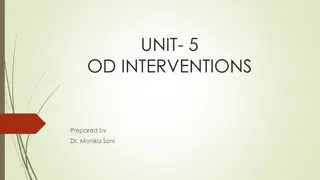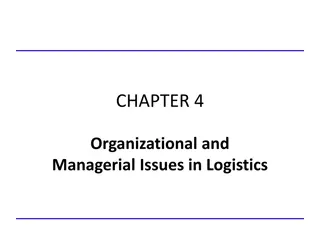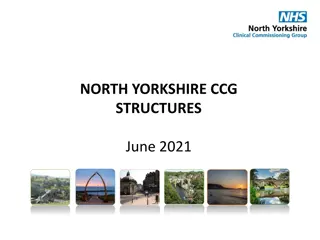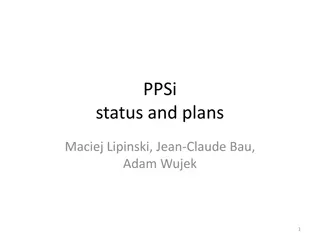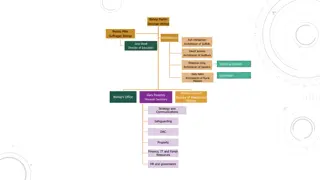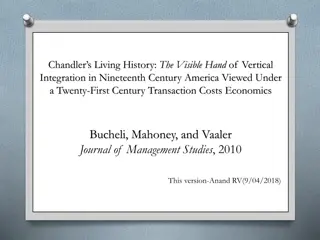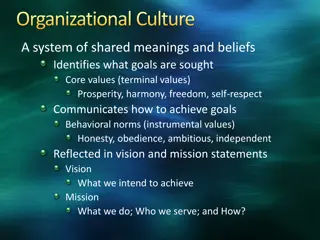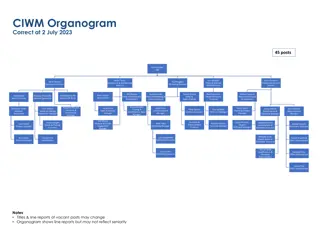WRS Organizational Structure
Money serves as a proxy for value and how the WRS is structured around customer value provision. Uncover reasons behind WRS' current organizational form through insights into hierarchical limitations, single points of failure, and power dynamics. Real-world examples shed light on challenges in marketing, clinical, finance, sales, and development domains. Insights from Coach John Wooden emphasize team cohesion and simplicity. The significance of organizational behavior and values in shaping the structure is discussed.
Download Presentation

Please find below an Image/Link to download the presentation.
The content on the website is provided AS IS for your information and personal use only. It may not be sold, licensed, or shared on other websites without obtaining consent from the author.If you encounter any issues during the download, it is possible that the publisher has removed the file from their server.
You are allowed to download the files provided on this website for personal or commercial use, subject to the condition that they are used lawfully. All files are the property of their respective owners.
The content on the website is provided AS IS for your information and personal use only. It may not be sold, licensed, or shared on other websites without obtaining consent from the author.
E N D
Presentation Transcript
WRS Alignment Talk XI: WRS Organizational Structure Purpose: Understand how money serves as a proxy for value Understand how WRS is organized around provision of customer value Understand why the WRS organizational structure exists in its present form
Can you send me a WRS Org Chart? Question limits how you think Hierarchical and Static Silos of thought and work Single Points of Failure Titles and Roles Primary Keys Ego and Power preservation reinforced. Secretive Activity (Doing Stuff) Relational and Dynamic Cooperation and SF Teams Resilient and scalable Customer Primary Key and Customer Value Defines DOD Cooperation and Communication Open Achievement (Getting Stuff Done)
I think I understand what you are saying, but can you give me an example of a situation or behavior where this was a problem? Sure Marketing: I was told only the VP of Marketing is allowed to communicate the ideas of the marketing team Clinical: Only someone with a medical degree can understand clinical ideas Finance: Why did we do it this way, that makes not sense to you does it? No. Then why did you do it? I was told to do it that way and I wouldn t understand the details. Sales: Sales are very complex, you wouldn t understand Dev: It will take us six months before I can show you something
Coach John Wooden Get the best players Players have to be about the team and not themselves Stick to the basics (less is more) We re too busy to open our doors, speak with you and cooperate
Organizational Behavior and Values will be Reinforced by our Organizational Structure Form follows Function Louis H Sullivan Databases: Relational vs. Hierarchical Servers: Balancing and Clustering vs. Single High Performance Machines Internet built for resilience Relational and Dynamic Cooperation and SF Teams Resilient and scalable Customer Primary Key and Customer Value Defines DOD Cooperation and Communication Achievement and Persistence to DOD Transparency, Honesty, Scalable, Open Architecture World is Dynamic
Yin Yang Duality Money and Value Wikipeda In Ancient Chinese philosophy, yin and yang is a concept of dualism, describing how seemingly opposite or contrary forces may actually be complementary and interdependent in the natural world
Value is what you should derive when using software What does the customer value? WRS Provides Value to Customer Customer $ to WRS
Understanding Value What we commonly value as individuals Health Good food Comfortable shelter Useful and beautiful objects and environments Education, Knowledge and Insight Freedom Status Happiness Our Time Clean Air Fairness (cucumber and grape) Safety
Understanding Money $ How do we use money? Money is a proxy for value Reservoir (place to store) our efforts (time) Is this worth spending $XX How much time and effort did it take you to earn $XX Is it worth it? Normalize and standardize what we commonly value Milk and other consumable commodities IPhone Services like a haircut Liquidity easily exchange services and products Future Security Pension Children s Education Sitting in a bank, investment fund, under our mattress Status Freedom
Gap between our understanding and the reality of what our customer s truly value and their motivations We mostly understand what money is and how it works We have a feel for what we personally value and mostly act on our values and what we value We have difficulty connecting with what motivates others: Cognitive mismatch in understanding what others value because we are mostly in our own head. Figuring it out requires questioning skills, listening skills, and a good deal of empathy. Important but inefficient to figure this out for each customer We need to understand the value we can bring to our potential clients and have them align with the value they truly are seeking We need tools and structure to help with this
Example: Scheduler Software What do we sell? Integrated scheduling software How does this help our client? It helps our clients manage their time by enabling the management of patient appointments. Why is this important to our client(s)? Left unmanaged, our clients time could be wasted by having unused time/gaps in their schedule, or scheduled time that is not used effectively/efficiently. So it is important to our clients to use their time efficiently and effectively? Yes, they both personally value their time (nobody likes to waste their time) and it has an economic impact on their practice.
User Story and Definition of Done based on Client Value User story: As a phyician I need a well designed scheduling systme to opimitze the use of my time because I value my time. Development: DOD is creation of scheduling software that enables optimal time management of physician Services: DOD measures scheduling performance around efficient use of time. Marketing articulating the value of the scheduling software Sales, selling what the scheduling software can do for the management of the provider s time
Well Designed System with System Properties Not just the Software People Value or Goal Processes Tools/Software
Value Toolkit/Checklist 5 Whys System properties: reliable, repeatable, sustainable People, Processes, Tools User Story Problem/Solution Model Perception of value is dependent on the individual Our Value=What they value
Examples of Our Value to Clients Continually improve and optimize their practice: Providing them with a system to help them run their practice Continual improvement and optimization Specific measurable goals and KPI RCM Value statement: all services rendered completely and correctly billed. All claims completely and correctly paid. System to remove root causes of why this doesn t happen Clinical Optimize provider time by removing unnecessary data collection, entry and transfer. System for clinical care delivery Front Desk: Bottleneck problem impacts all other processes Amenable to systematization, automation and BPO Marketing and Reputation Management: Unique system to manage: Website: how the practice perceives its unique value Reviews: how the patients perceive the care we provide
WRS Structure and How Client Value Creation is Functionally and Practically Used When We Work Together
WRS Structure: Who assumes these roles? Relational not hierarchical Centered around dynamic relationship with client (primary key) and relationship to one-another
Development and Services Duality User Story and Value at the Center Development (not just functionality) Services (not a commodity)
Marketing and Sales Duality Marketing (Articulates our value) Sales (Agrees to deliver our value in return for monetary payment)
Finance and HR Duality Relationship between Individual Performance and Company Performance with Customer Value at Center HR (Individual Performance and Feedback) Finance (Company Performance and KPI Measurements)
